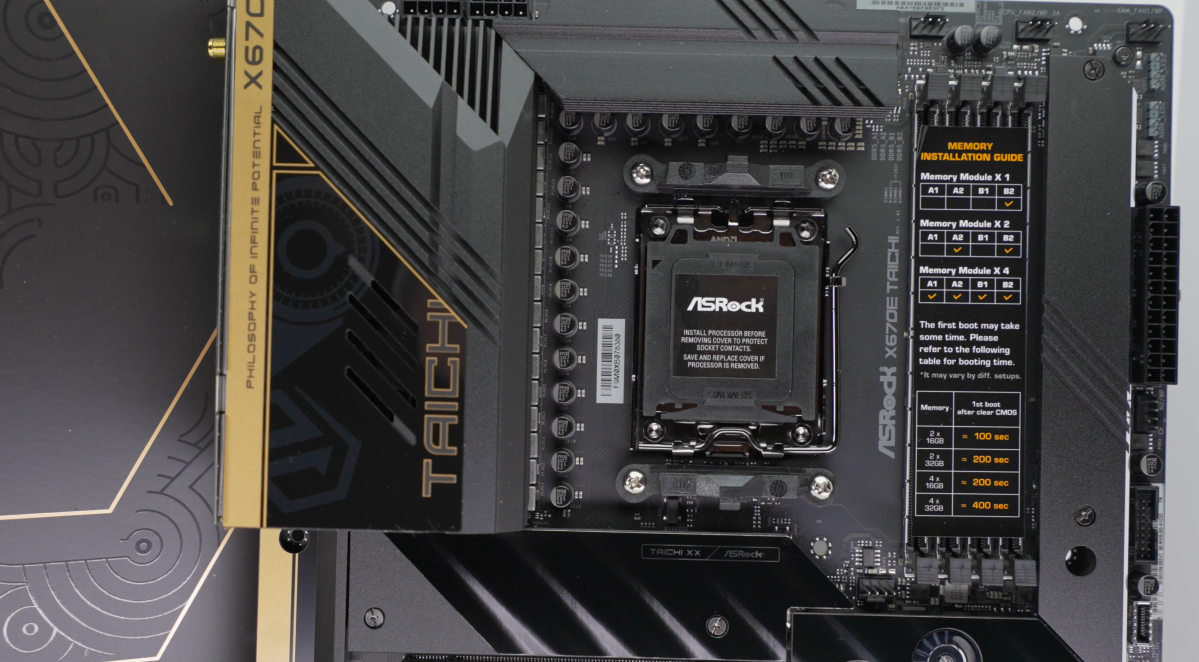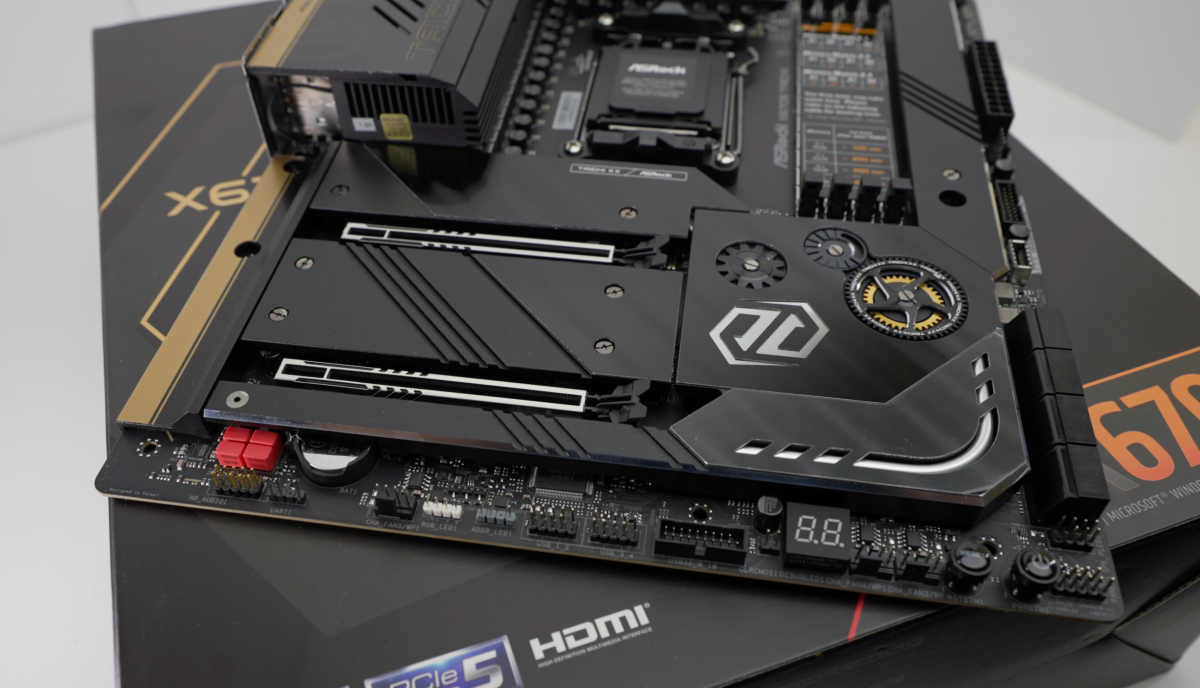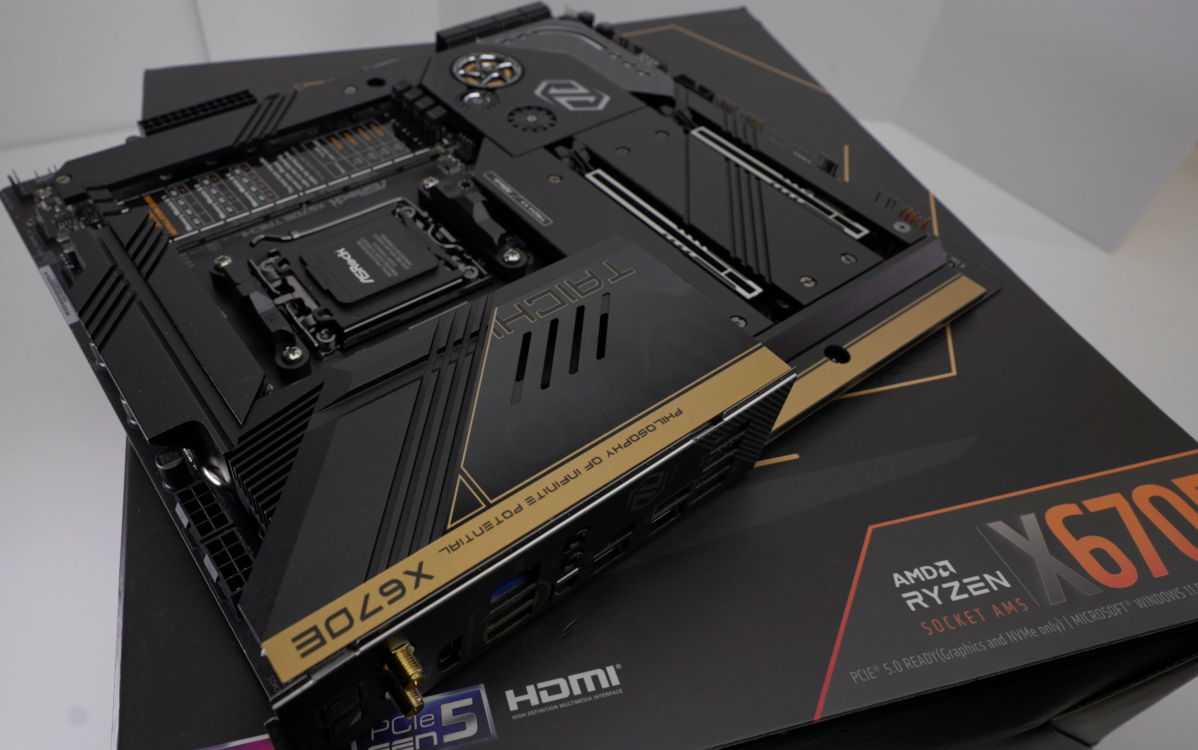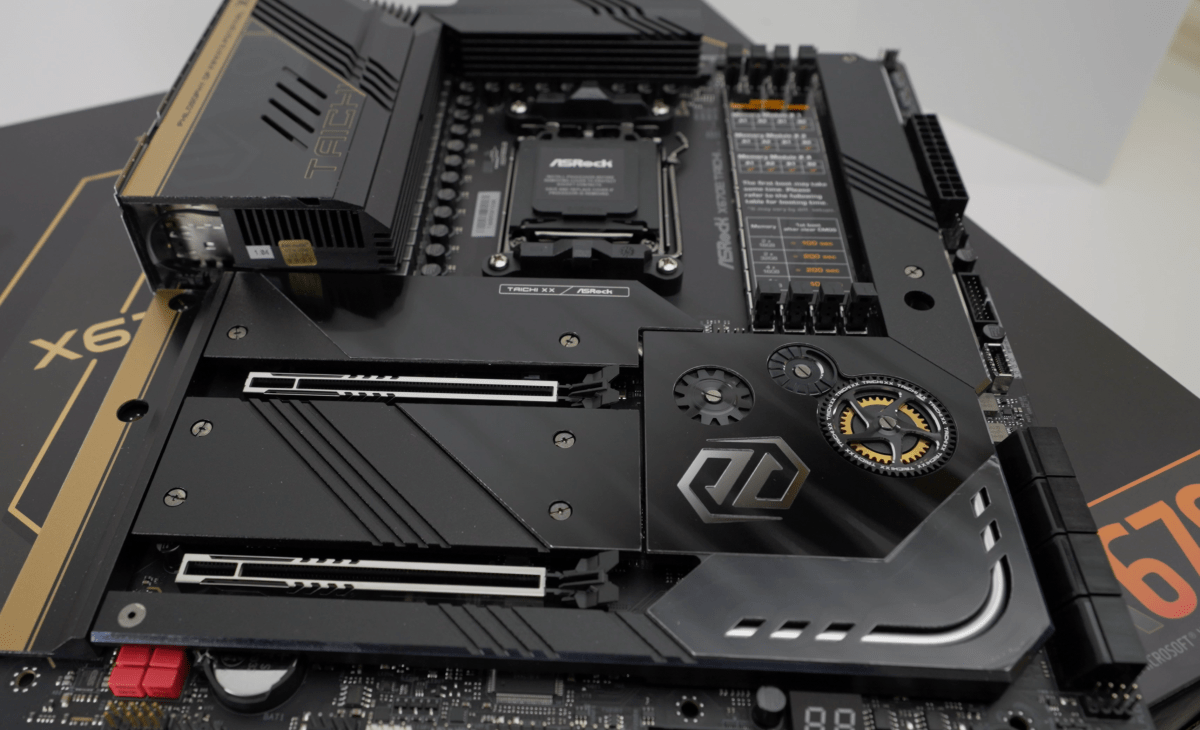Asrock X670E Taichi review: This motherboard hits a sweet spot
Expert’s Rating
Pros
- Loads of features for both gamers and content creators
- Excellent I/O, four M.2 slots, USB 4, overclocking features
- One of the best designed X670E motherboards
Cons
- BIOS updates a must: Early BIOS had some issues
- M.2 quick release, 10GbE networking would be welcome
- Sticker on top of RAM slots is tough to cleanly remove
Our Verdict
The Asrock X670E Taichi has a lot going for it and includes one of the richest feature sets among X670E motherboards. It’s also cheaper than most other competitors, with similar capabilities. Odd quirks such as inconveniently placed stickers and a buggy BIOS aside, there’s a ton of value in this board.
Best Prices Today: Asrock X670E Taichi

Not Available
AMD’s freshly launched Ryzen 7000 CPUs are blazingly fast, and the companion X670E chipset brings even more features to the table.
The AM5 Ryzen launch stumbled somewhat over its high overall platform costs, however. But recent holiday discounts have softened the blow with cheaper CPU pricing.
Where does the Asrock X670E Taichi come in? At an MSRP of $499, it’s not a budget option—but it packs build quality and features often found on more expensive motherboards. With a feature set that will blow away both gamers and content creators, the Taichi has tons of promise.
The board has a sleek, futuristic design, and outdoes itself in the hardware rundown, too. We’ll go over the specs, features, design, and performance attributes. Does the Taichi have what it takes for a truly premium motherboard experience? Let’s find out!
Asrock X670E Taichi: The specs

Is it a USB4 or Thunderbolt 4? Only the Asrock X670E Taichi knows the answer.
Thiago Trevisan
The Asrock Taichi comes wrapped in AM5’s premium motherboard chipset offering, the X670E. Compared to B650, you’ll be getting more PCIe lanes, USB, and SATA ports. It’s all DDR5, however, so plan accordingly.
It supports AMD’s new Ryzen 7000 lineup with a completely redesigned socket, too. Yep, no more pins on the CPU like in Ryzen 5000.
Let’s discuss the delightful unboxing experience: At $499, you’re getting top-shelf packaging here with a windowed box so you can peep the motherboard inside. Yes, please! You also get some nice included extras: typical Wi-Fi antenna, SATA cables, and a neat M.2 fan. Oh, it’s a big motherboard—E-ATX, wider than normal (12 x 10.5 inches).

The Asrock X670E Taichi has outstanding DDR5, but the sticker over the memory slots is questionable.
Thiago Trevisan
Note: It does come with a “sticker” over the RAM slots, which can leave some residue when removed. Hopefully this changes with future iterations to avoid this.
- E-ATX form factor
- Support for Ryzen 7000 CPUs
- 24+2+1 Phase Power Design
- DDR5 RAM, dual channel up to 4 DIMMs 128GB
- 2x PCIe Gen 5.0 16x slot
- 4x onboard M.2 slots, (1x PCIe Gen 5, 3x PCIe Gen 4)
- HDMI out
- 10 USB ports on back, including 2x USB4
- “Killer” Wi-Fi 6E
- “Killer” 2.5GbE LAN
- Multiple RGB headers
- 8 SATA 6Gb/s ports
- 8 PWM fan headers
- BIOS Flashback and Clear CMOS buttons
- Power button, reset button, and debug
- Audio: ALC4082 Codec
- MSRP $499
Asrock X670E Taichi: Features
First, for an MSRP of $499, the included features deserve a big, “Wow.” Gamers AND content creators will be impressed.
Super-fast 40Gb/s USB 4? You’ll get two of them—it’s typical for motherboards to offer these at the $699 level or above! Together with eight SATA ports and four onboard NVMe slots, workstation users have all they need with this rich feature set. With Wi-Fi 6E and 2.5GbE LAN included, only 10GbE is lacking. For this price, we can’t fault Asrock for not including this option, either. Small nitpick: We’d love to see a quick release system on the M.2 slots, as found on other premium X670E motherboards.

Thiago Trevisan
Gamers are also accounted for. Power button? Yep. Reset button? Here too. How about a debug screen? Check. These are great for overclockers, but also come in handy for any user during troubleshooting and building stages. BIOS Flashback and Clear CMOS are also present, rounding off the enthusiast-grade features.
You’ll get a healthy offering of 2x PCIe 16x slots, too. These are more than enough for a beefy GPU plus a PCIe card. Some workstation users may feel limited by having just two PCIe slots, but that’s the trend in modern motherboards. Four onboard NVMe slots, with one being a “blazing” Gen 5, is a great addition.
Audio is also impressive, with plenty of inputs alongside the Realtek ALC4082 codec, such as SPDIF. Short of an external USB DAC that comes with higher-end motherboards, the Taichi includes everything you’d need for a high-level audio experience onboard.
Asrock X670E Taichi: Design

Thiago Trevisan
The Asrock X670E Taichi feels premium, period. It is one of the most creatively designed motherboards on the market. First, it looks serious and interesting with its gold “gears” design and silver accents. This gold motif carries through on the side of the PCIe area and works its way up to the I/O shroud. (Yep, integrated I/O shield, like we love to see!)
The I/O shroud has its own charms, too. Starting in the rear, what is generally a boring USB port view, is instead a wonderfully quirky layout aesthetically. Blue and gold make a great combo here, with some of the “gears” theme entering as well. The VRM area means business—and that’s exactly how the Taichi looks in its northern region.
Backplates are a hallmark of premium motherboards, and found on the Taichi. It gives the board a high-quality, tactile feel when held in the hand. For RGB fans, the front is understated, with the Taichi logo lighting up nicely on the lower PCIe area, and some tasteful back lighting, too. Overall, it’s a beautifully designed and built motherboard that is appealing for both gamers and content creators.
Asrock X670E Taichi: Performance, software, and BIOS
With a VRM phase design of 24+2+1 packing 105 amps, plus an eight-layer PCB, even the mighty Ryzen 9 7950X will find this a worthy home. The beefy VRM heatsink proves that Asrock knew to add the goods where it counts.
Asrock includes a “server-grade low-loss PCB” here, which is essential: The Taichi is tasked with handling PCIe Gen 5 16x slots alongside a Gen 5 NVMe slot. (On top of that Ryzen 9 7950X!)
You’ll likely run into a bottleneck with your CPU cooler long before you reach any wall with the VRMs or power delivery limitations—they’re overkill! (Most AM4 CPU coolers that use the original backplate should work fine with AM5, but be aware that custom backplate cooling solutions may require an updated part.)
That Gen 5 NVMe slot can also be cooled by the included M.2 heat sink fan, a nice touch since these drives can certainly get toasty.
DDR5 is also here, and if you can remove that stubborn sticker, it will give you some of the best performance we’ve seen from DDR5. Going up to 6600MHz, you’ll be able to choose one click “Expo” profiles in the BIOS.

Thiago Trevisan
Asrock has had several BIOS updates so far, and hopefully the longer-than-normal boot times continue to improve. The sticker has some estimates on boot times after a clear CMOS, with worst-case scenario of four sticks (32GB) taking as long as 400 seconds! (That’s almost 7 minutes for those keeping track!)
If you’re running an RTX 40 series GPU from Nvidia, you should grab the newest BIOS updates as well, since they’ve included various performance updates related to these graphics cards.
The BIOS itself is easy to use, and as expected, is robust in tweaking options for overclockers and those seeking to fine-tune their rigs. Those who want a simple one-click approach also have this option. Asrock has a strong history with extreme overclockers, such as with its “Formula” line of motherboards, the DNA of which can be found in the Taichi. Rounding things out, power and reset buttons, as well as a debug screen are here for maximum control.
Asrock also offers various pieces of control software within Windows: Polychrome RGB for light functionality, Nahimic3 for audio, APP Shop for updates, and Asrock motherboard utility for other functions. Compared to the Asus Armoury Crate, Asrock’s software is less integrated and could stand more polish.
Should you buy the Asrock X670E Taichi?
The Asrock X670E Taichi brings one of the best feature sets you’ll find on any motherboard in the $499 range. With USB 4, plenty of NVMe slots, plus a premium presentation to the entire package, it’s a winner.
Sure, there are a few items we can nitpick: that tough-to-remove sticker, and that lack of M.2 quick release. (It’d be a home run to have 10GbE included too!) We also don’t like that the USB4 ports aren’t clearly labeled? Is one of them Thunderbolt 4? The symbols are the same.
BIOS updates are welcomed and vital, and we hope the board continues to improve and remain stable. (This is common of most X670E motherboards—with a new chipset updates and tweaks are expected.)
Overall, the Taichi is one of the best premium motherboards you can find for X670E, especially considering the price. Both gamers and content creators will find plenty to like in this capable and richly appointed product.
For all the latest Technology News Click Here
For the latest news and updates, follow us on Google News.
